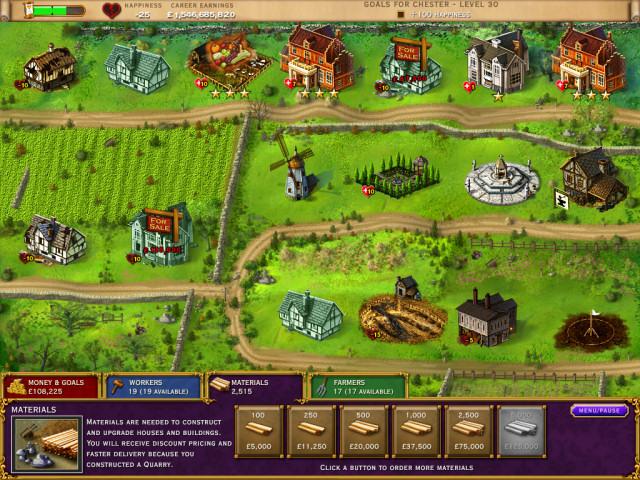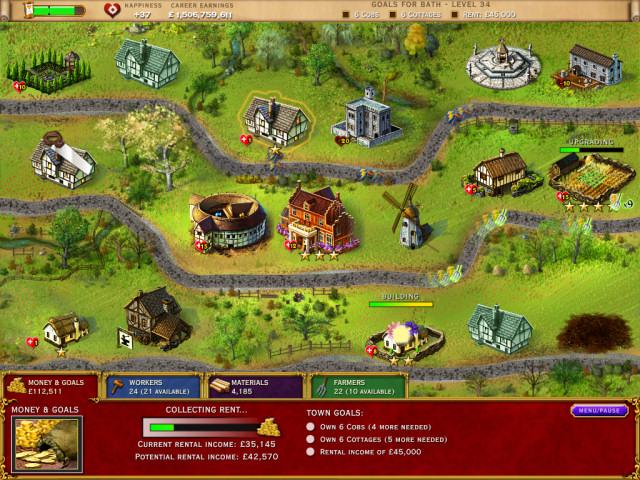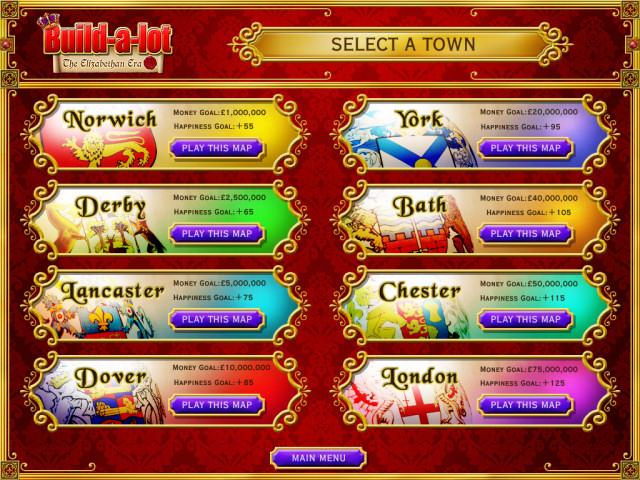- Wondering how to get Monopoly GO! free rolls? Well, you’ve come to the right place. In this guide, we provide you with a bunch of tips and tricks to get some free rolls for the hit new mobile game. We’ll …
Best Roblox Horror Games to Play Right Now – Updated Weekly
By Adele Wilson
Our Best Roblox Horror Games guide features the scariest and most creative experiences to play right now on the platform!The BEST Roblox Games of The Week – Games You Need To Play!
By Sho Roberts
Our feature shares our pick for the Best Roblox Games of the week! With our feature, we guarantee you'll find something new to play!All Grades in Type Soul – Each Race Explained
By Adele Wilson
Our All Grades in Type Soul guide lists every grade in the game for all races, including how to increase your grade quickly!
Build-a-lot: The Elizabethan Era Review
In the real estate world, house flipping is just a cool way of saying you’re going to buy a piece of junk property, fix it up so it’s shiny and new, and then re-sell it for a profit. HipSoft’s popular Build-a-lot games have successfully taken the concept and turned it into an addictive casual strategy series. Earlier installments have you working your property mogul mojo in modern times, with installments focusing on international travel, clean energy, and building award-wining towns. The series’ fifth game, Build-a-lot: The Elizabethan Era, switches things up by journeying back in time.

Take a fun trip to days long past for some real estate tycoonery.
In the real estate world, house flipping is just a cool way of saying you’re going to buy a piece of junk property, fix it up so it’s shiny and new, and then re-sell it for a profit. HipSoft’s popular Build-a-lot games have successfully taken the concept and turned it into an addictive casual strategy series. Earlier installments have you working your property mogul mojo in modern times, with installments focusing on international travel, clean energy, and building award-wining towns. The series’ fifth game, Build-a-lot: The Elizabethan Era, switches things up by journeying back in time.
Though the gameplay is anything but oversimplified, The Elizabethan Era takes you back to the basics of property management in a time when civilization lacked many of the modern conveniences we now enjoy. You’ll go from building and working on basic structures like thatched-roof cobs and wells to erecting sprawling palaces and elaborate amusements for the populace. Travel across the countryside, you’ll help to revitalize and improve on ailing settlements in England while lining your pockets with a little extra coin. Much of what you’ll do revolves around purchasing and building different kinds of properties, upgrading them, and accruing the rental funds required to make other changes and fixes to each town.

Anyone who’s played previous Build-a-lot will feel right at home with the gameplay, but it’s also not hard for newcomers to pick up. The core component of the gameplay in each level involves using the funds and materials you have at your disposal to improve the town you’re working in and meet specific goals before time runs out. You can buy new or dilapidated houses that are for sale, construct your own on vacant lots you’ve purchased, and raze existing buildings to make way for new structures you want to build. In an emergency, buildings can also be sold for a quick infusion of money.
Different houses you own produce regular rental income every minute or so, and you can upgrade them to increase the town’s overall happiness level and the amount of money they generate. New structures are unlocked as you play through the campaign. Houses and farms are eventually supplemented by service buildings (like blacksmiths and wells that provide crucial a resource, amusements (like pubs and theaters that improve happiness), and construction buildings (like workshops and quarries that are requirements for creating other special buildings).

New buildings or upgrades of any sort require workers, and training them costs a pretty penny. When building farms, you’ll also need farmers to tend the fields. Then there are material resources to contend with. They’re expensive but extremely necessary for any upgrades and construction. Juggling finances in real time, making split decision on when to buy and sell, and expanding at a steady enough rate to meet your goals isn’t as complicated as it sounds. Once you get into a good rhythm, the game flows smoothly and it’s a lot of fun. However, the difficulty increases substantially later on in the campaign as fresh challenges and elements are added in.
The types of goals you’re asked to tackle in a given level also vary. You’ll start with simple goals like earning a set amount of rent or total money, building a set number of specific structures, and eliminating any dilapidated buildings. In later levels, these objectives stack and grow, taking a bit longer to complete. Time is constantly ticking. Though you have a generous amount of time on the meter to work with, there’s a halfway mark that gives you a higher score if you beat the level before the time reaches it. Problems like worker sickness, famine, plague, drought, and building repairs also pop-up when you least expect them, keeping you on your toes.

The Elizabethan Era‘s new settings and accoutrements freshen up the Build-a-lot experience, even if the gameplay itself is still solidly rooted in foundation laid out by past games in the series. After five games, it would have been nice to see a higher level of animation in the buildings and environments, though the visual details are authentic and pleasing to the eye. Traveling to different areas of England’s landscape does offer a small amount of variation in the look of some levels. However, the nature of the gameplay and the similarities between the landscapes can make it repetitive after awhile. That’s not really a big problem, since flipping houses from one town to the next is enjoyable and will test your abilities, thanks to increasingly tough goals.
Anyone who loves the earlier games will find The Elizabethan Era is just as absorbing, and visiting the past does make you look at the gameplay in a slightly different way. It feels both completely new and comfortably similar at the same time. In addition to the main campaign and a more relaxed casual mode, the premium edition also features an additional campaign with many new levels to explore. There’s a whole lot of game here to enjoy, and it’s a blast to the real estate past we can heartily recommend.

The good

The bad
More articles...
Monopoly GO! Free Rolls – Links For Free Dice
By Glen Fox
Wondering how to get Monopoly GO! free rolls? Well, you’ve come to the right place. In this guide, we provide you with a bunch of tips and tricks to get some free rolls for the hit new mobile game. We’ll …Best Roblox Horror Games to Play Right Now – Updated Weekly
By Adele Wilson
Our Best Roblox Horror Games guide features the scariest and most creative experiences to play right now on the platform!The BEST Roblox Games of The Week – Games You Need To Play!
By Sho Roberts
Our feature shares our pick for the Best Roblox Games of the week! With our feature, we guarantee you'll find something new to play!All Grades in Type Soul – Each Race Explained
By Adele Wilson
Our All Grades in Type Soul guide lists every grade in the game for all races, including how to increase your grade quickly!







